Kibera Slum is the poorest suburb in Kenya and the largest Slum in Africa. It is home to more than a million people, living in extreme conditions and making less than 1$ per day.
Diseases caused by poor hygiene are common. Fresh water is scarcely available and some is collected from the Nairobi dam. This leads to many cases of cholera and typhoid as the water is not clean.
Locals live in small shacks, built with mud and concrete, which can often house up to eight or more people, and just 20% of Kibera has electricity.
Due to high levels of unemployment, drinking Changaa is a popular pastime. Changaa is a cheap and strong alcoholic drink, widely available there. The literal Swahili translation of the word Changaa is “kill me quick”. Unfortunately it is usually not prepared correctly, with a high level of Methanol, and it could lead to dangerous side effects such as blindness and death. The consumption of Changaa and the use of drugs often lead to an increase in violence, crime and rape in the slum.
Kevin leading us inside the Slum Dirty water
Are tourists allowed to visit Kibera Slum?
It is not a place where tourists go and definitely not a place you can go on your own. It is very dangerous and you will probably get lost there.
In the last few years, however, some locals have started projects to bring tourists to the Slum and help the community with the earnings.
I visited the Slum during my 24 hour layover in Nairobi. I recommend you to take the tour with Kevin (you will find his contacts at the end of the article). He is a local young guy, knowledgeable and top recommended on Tripadvisor. He started this tour only a couple of years ago and he already has several projects to improve life conditions in the Slum.
Kibera Slum tour with Kevin
Kevin picked us up from our hotel at 7 am and drove us to Kibera. On the way there we saw hundreds of people walking and it seemed a sort of procession. He explained us that these are people from the Slum that walk to the richer areas of town every day to work. The closer we were getting to Kibera, the more people were in the procession! We finally arrived to Kibera and entered inside the biggest slum of Africa.
Traffic was intense and the smell was awful. We parked the car and started to explore by foot. There is one main road which divides the slum into two sections, and we will visit both areas during the 3 hour tour with Kevin. Walking around the slum is quite hard, there is dirty water leaking everywhere and it’s better trying not to touch anything just to be on the safe side. It is definitely not a place for the faint hearted.
Local School
Kevin brought us to a local school where we met the Dean. He was very interested in knowing the reason we were visiting Kibera and asked us to meet and talk to the students.
Entrance of the school Photo with the Dean
Therefore we went to a class and I was impressed by the dress code of the students. You wouldn’t expect such a rigorous dress code in that Slum. The teacher explained us that those guys were some of the best students of the school and were very ambitious to get a scholarship to go to University.
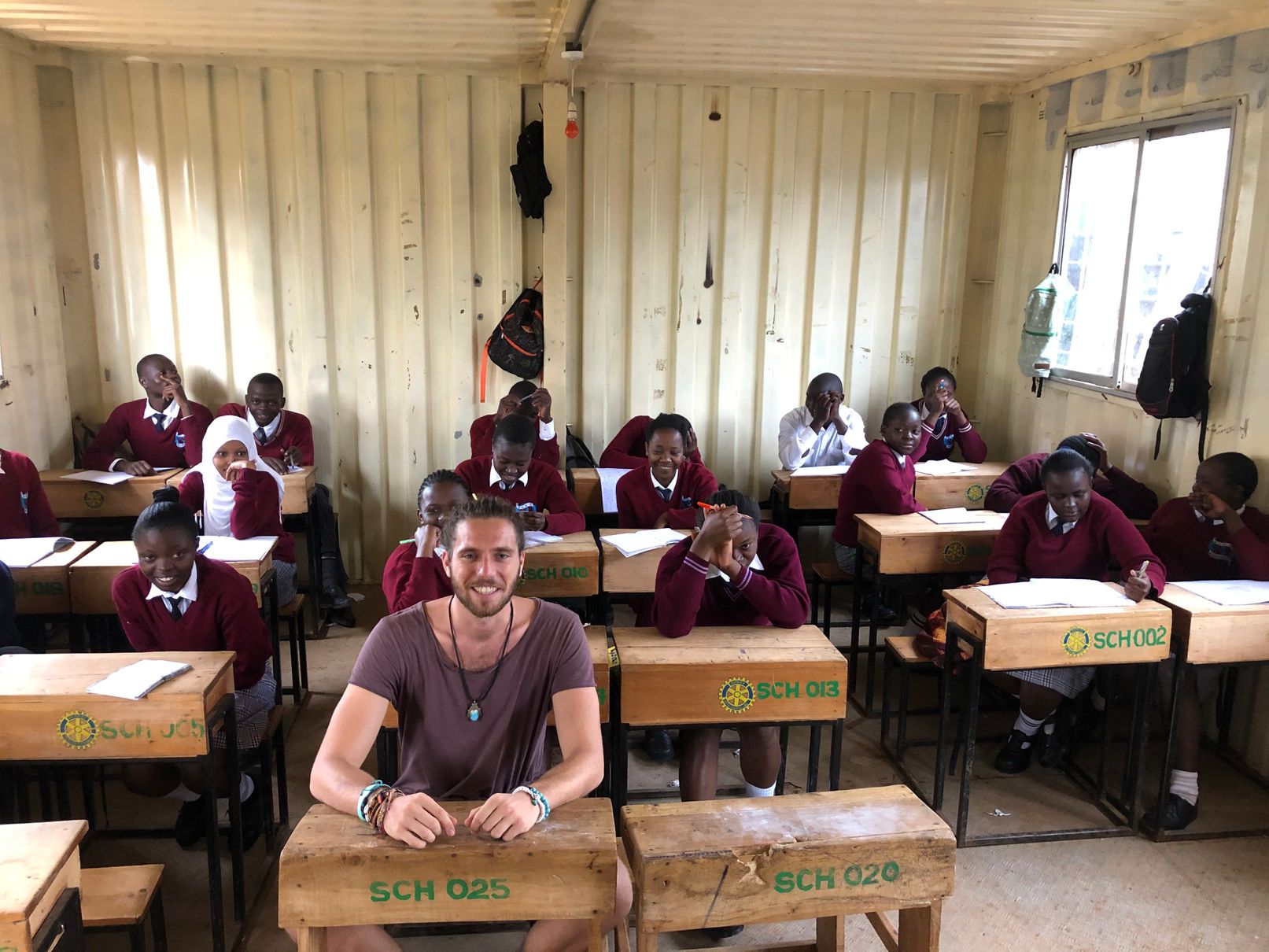
We spoke to them and their biggest dream was to be able to go study in the UK and one day come back to help their families in the Slum. They asked us a lot of questions on how to be great students at university and what’s like to live in Europe.
Very interesting and touching experience, we took some photos, hugged them and wished the best luck!
Kevin’s House
After we kept walking around the Slum and went to Kevin’s house. We met his wife and daughter and he then showed us his latest project. When it rains the water gets inside the houses and makes it hard to walk in the narrow “streets”. Hence Kevin was trying to build a path to walk and a protection for the houses against the water. He explained us that by doing such project he wishes to help people living in those houses, and to give a job to some of the many unemployed inhabitants of Kibera.
We kept walking around the area, garbage and dirt is literally everywhere. We even saw a goat eating a piece of paper.
Then we crossed the main road to go to the other side of Kibera. We saw pairs of shoes hanging from the electric wires. Kevin explained us that it is a symbol of people from the Slum that stopped with their criminal life and want to become good citizens helping the community.
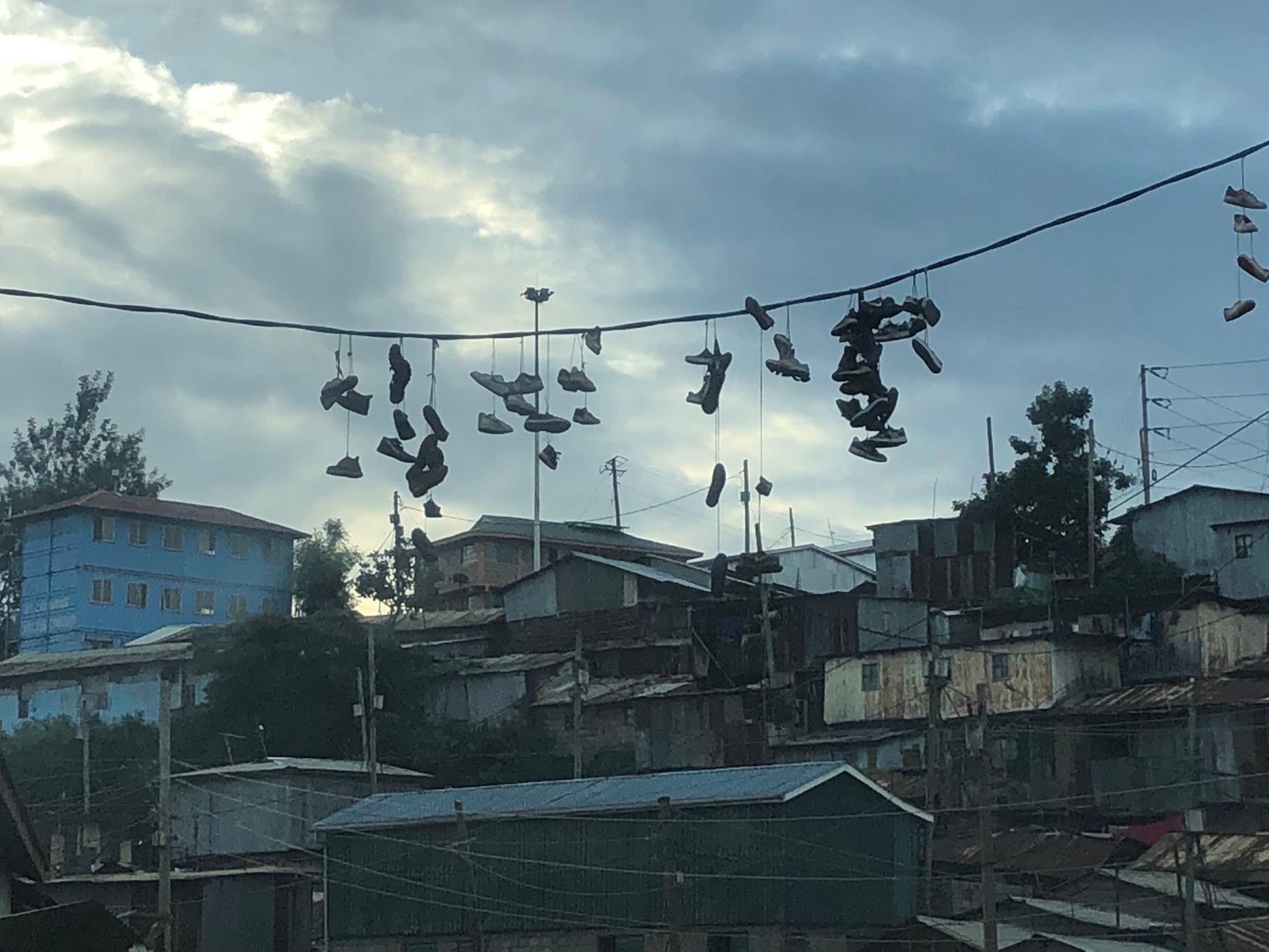
Rubbish Dump
We saw a massive open rubbish dump, laying right next to the houses where people live. It was unbelievable, awful and smelly. Unfortunately Kevin told us there are no many other ways to keep the garbage and the government doesn’t do much to help the community.
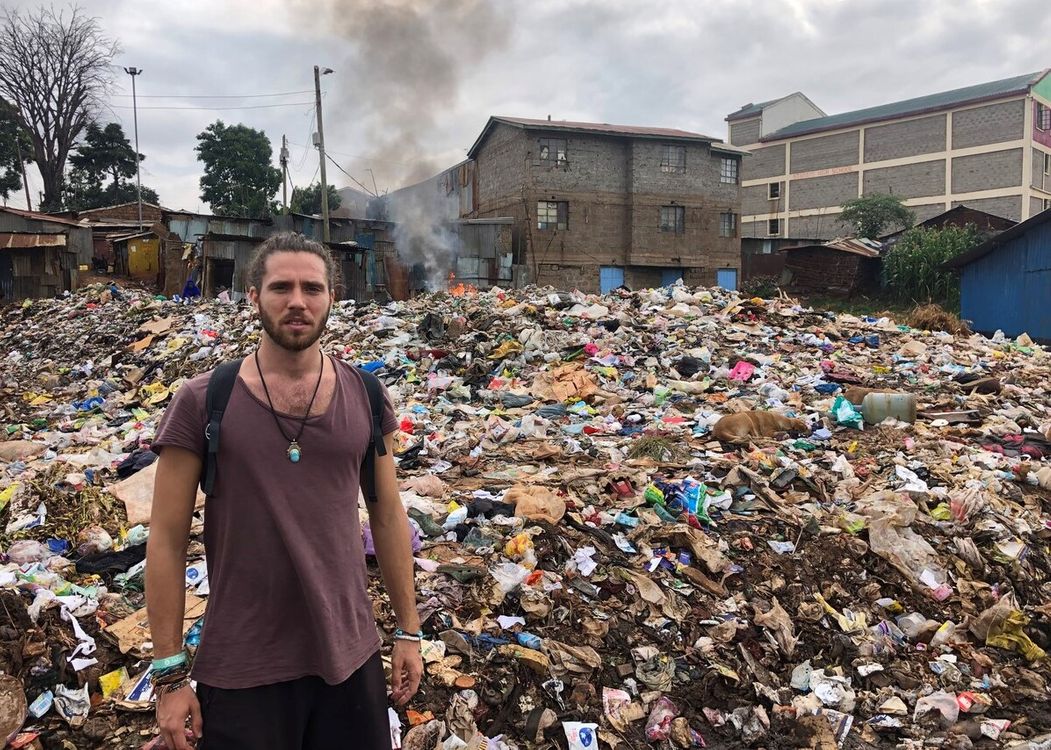
Small local factory
Kevin then brought us inside a small factory. There they realize necklaces, keychains and other small items made from animal bones and different waste materials. He started this project to give jobs to locals who committed criminal acts, and to raise money for the community. They sell these items at some local markets in nairobi and to those few tourists visiting the Slum.
We explored a bit more of that side of Kibera and then went back to the car. Kevin drove us directly to the airport to catch our flight to Johannesburg.
In conclusion, visiting Kibera Slum was a tough experience, but very interesting and rewarding. If you ever find yourself in Nairobi I recommend you to take the tour with Kevin as you will learn a lot of a world we barely know it exists.
Contacts for Kibera Slum
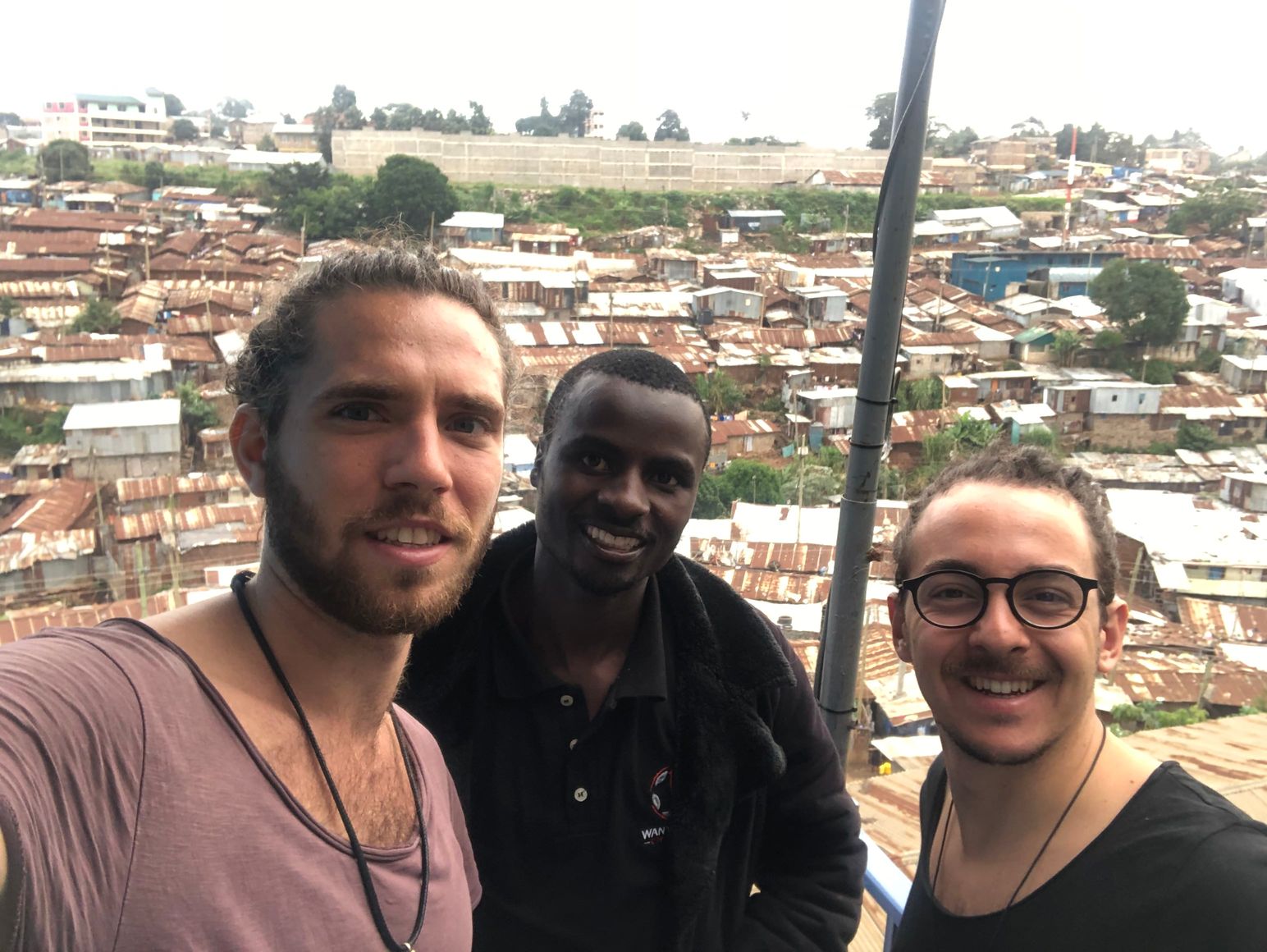
I’ll drop Kevin contacts here:
Tripadvisor: Kevin’s Kibera Slum Tours
WhatsApp: +254736103076
More videos from Kibera Slum
Here you have some videos from Kibera, so you can try to get an idea of the extreme living conditions in the Slum:
How to spend the rest of your time in Nairobi?
Check this article to read more about what to do in Nairobi. I had a long layover there for 24 hours, so here are some advices on how to spend a full day visiting Kenya’s capital city.
If you enjoyed reading this article share it with your friends. And if you have any questions regarding the Slum or want some help in arranging a tour, write in the comments below.



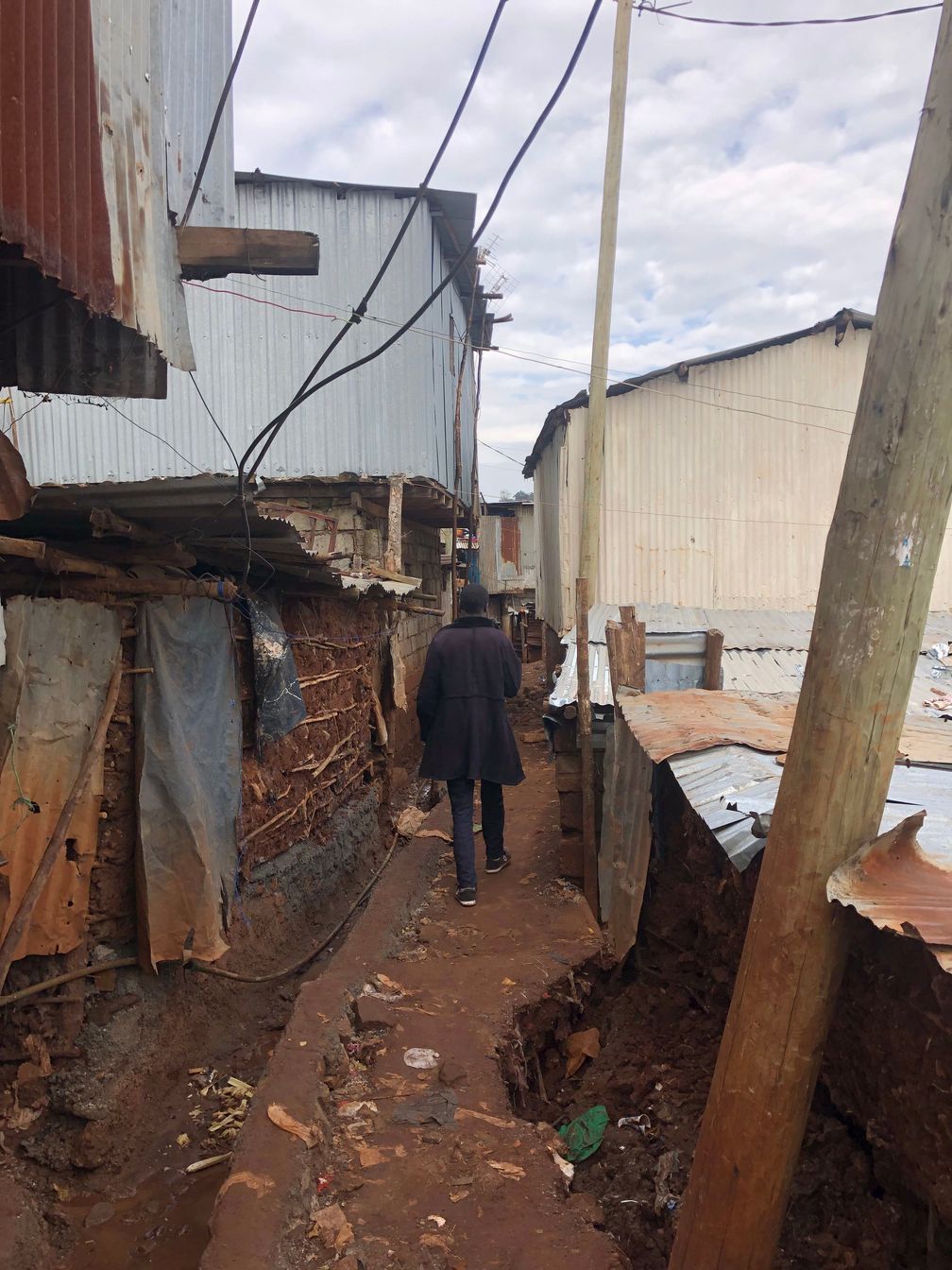
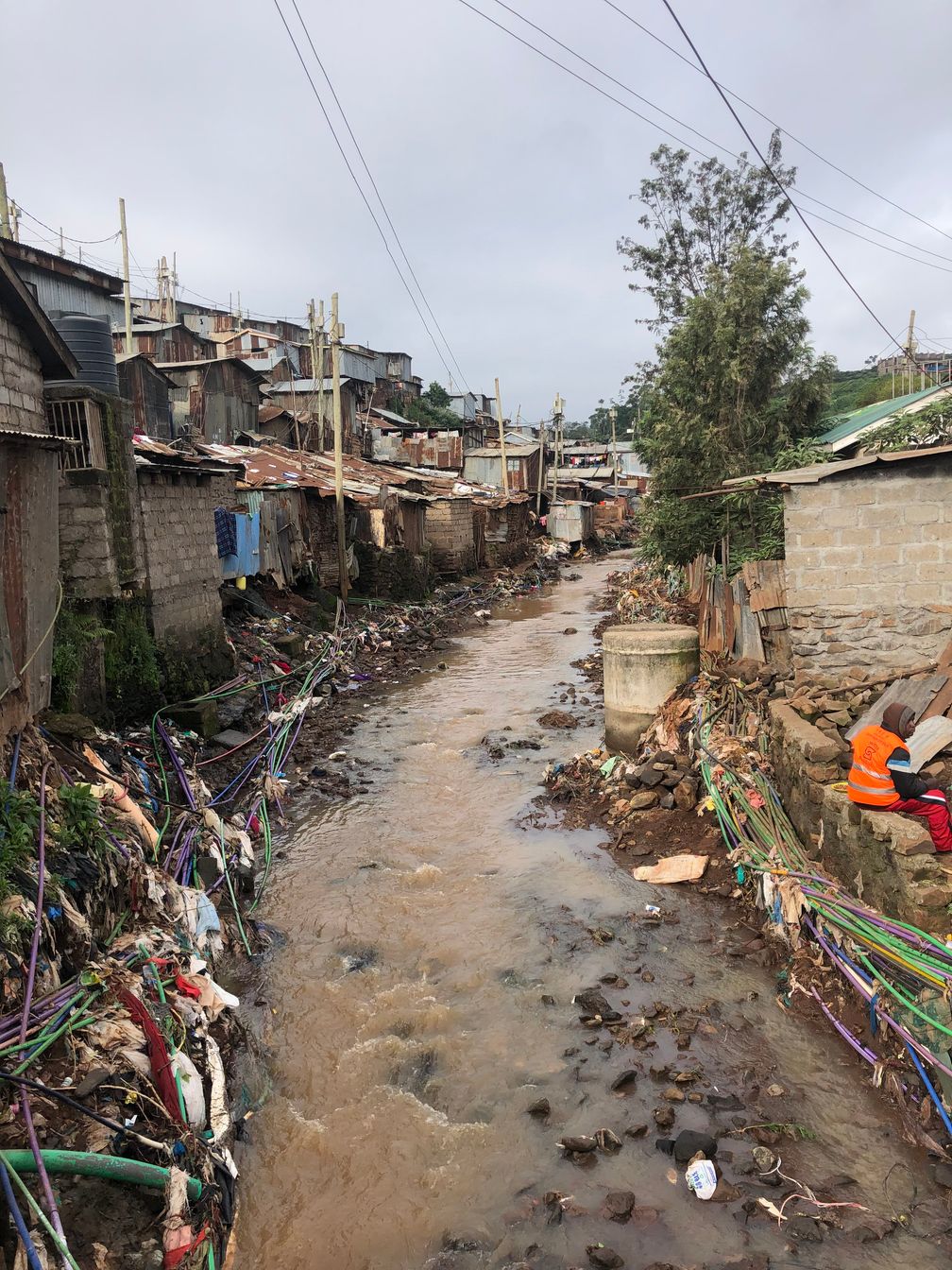

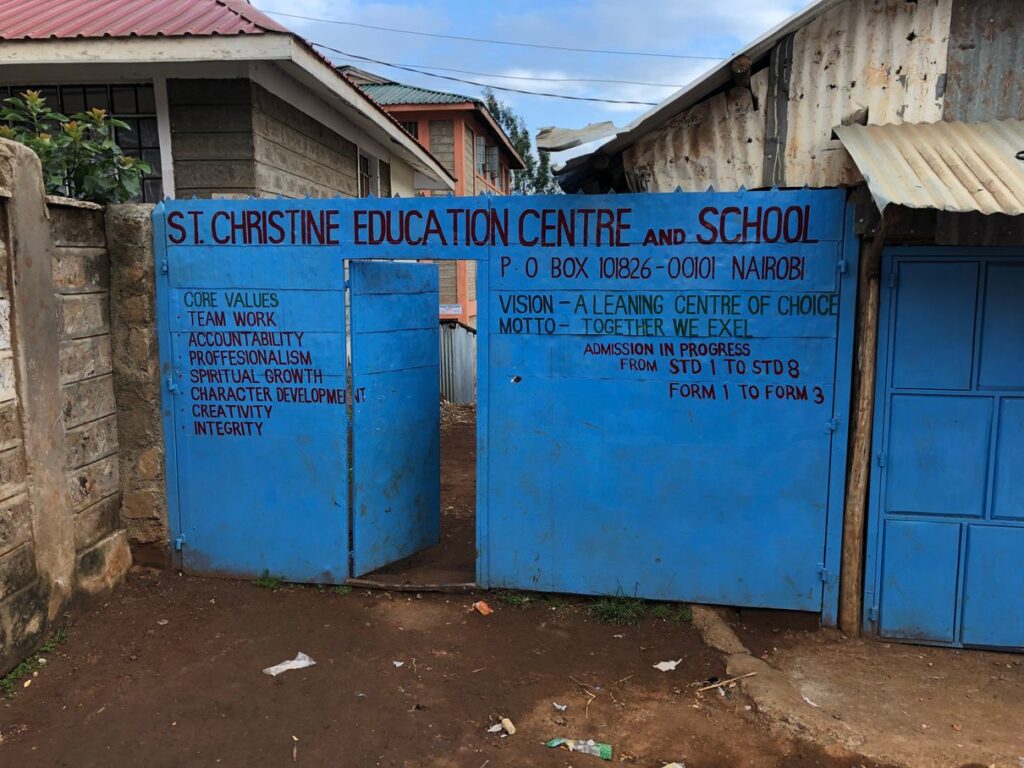
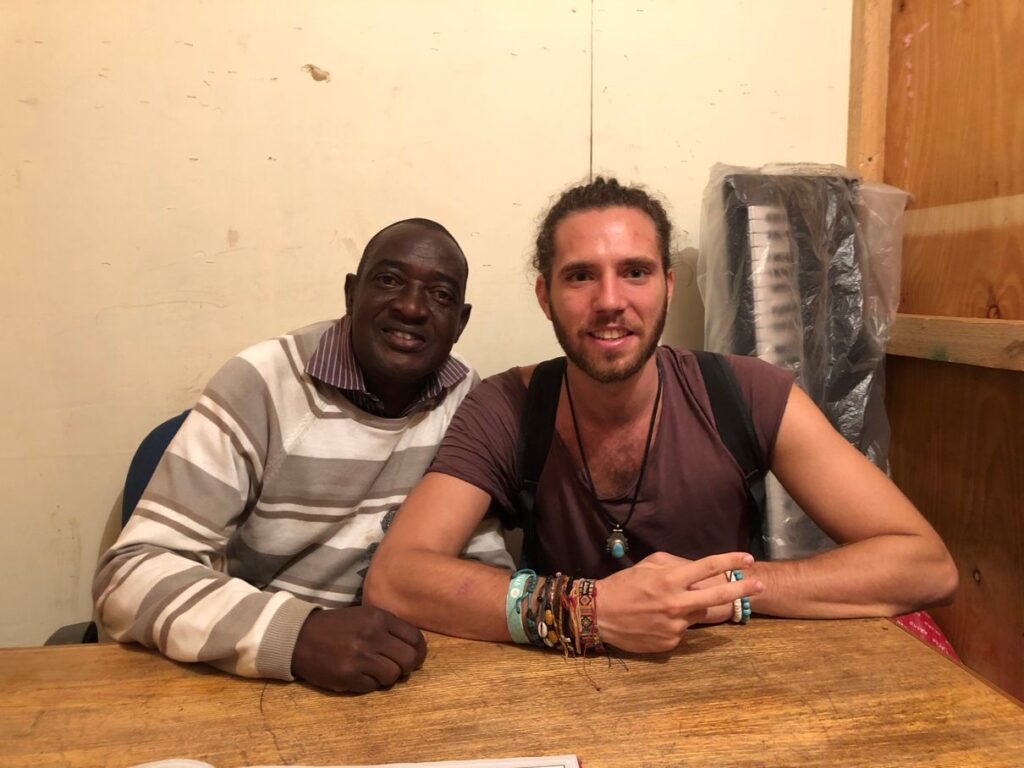


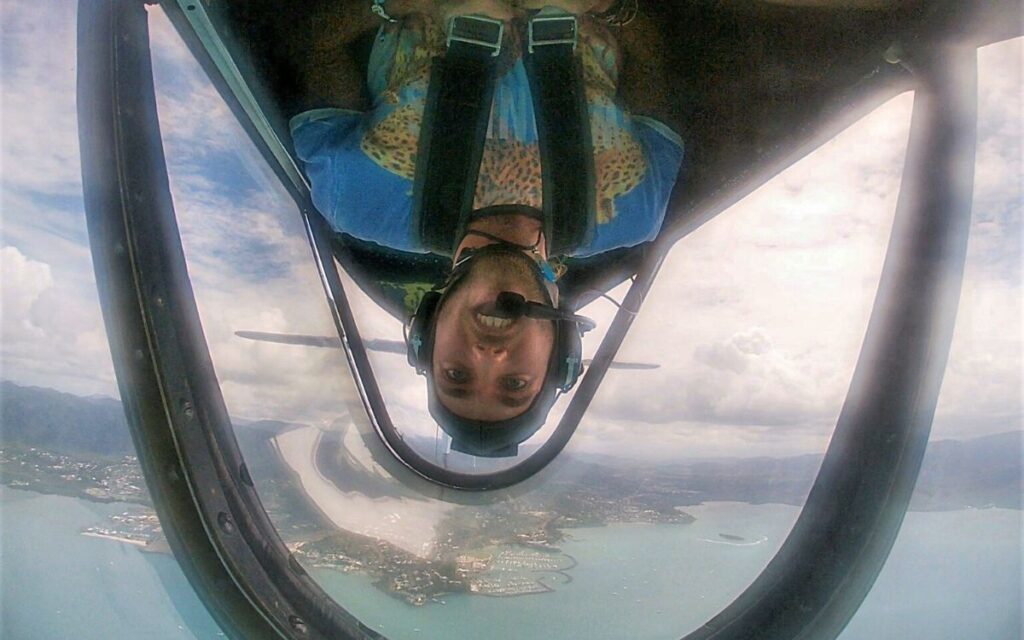

0 Comments
Trackbacks/Pingbacks